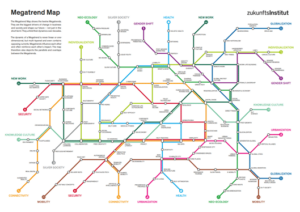The ethos of the sustainable business has become a corporate ideal that’s on everyone’s radar. Conversations about carbon footprints, water and energy consumption, production waste, social inequality, product recyclability, and other dimensions of sustainability are more serious. And even customers and partners are growing more vocal about their expectations.
But this sustainability mindset rarely translates to workplace culture in the same way. While new policies, processes, and practices are being adopted at an incredible pace, little attention is paid to how people internalize the purpose and impact of their work and how that sentiment changes the dynamics of talent attraction, retention, and engagement.
What are organizations missing? According to a National Environmental Education Foundation (NEEF) survey of employees from large enterprises, it’s the opportunity to enhance job satisfaction and overall feelings about the company. In most cases, people are also willing to incorporate sustainability practices learned at work into their personal lives (86%) and daily job activities (81%).
More Than an Aesthetic
Most executives know the three components of sustainability: environmental, social, and governance. But the more I research the expectations and shifts in workplace cultures, the more I realize that the employee experience should also be included in the overall equation.
People are highly receptive when technologies, processes, and policies are easy to use, simple enough to understand, and, above all, convenient. But the moment a new sustainability practice, reporting structure, or measurement becomes just “another thing to do,” they are less likely to connect their activities to the numbers they see on the screen.
In fact, rising attrition – as well as the demographic shift of Baby Boomers leaving the workforce – is putting employers under tremendous pressure. Retaining and keeping employees engaged is an important challenge for HR right now and will continue to be in the future.
Truth be told, people want to see their employers’ sustainability efforts translated into their HR strategy and policy, such as:
- Prioritizing and valuing healthy and safe conditions
- Fostering an inclusive and open environment
- Having an agile workforce that can quickly adapt to change
- Ensuring people are aligned, engaged, and properly skilled to face the upcoming changes and developments
Co-Creation of the Sustainable Employee Experience Journey
For HR organizations, rethinking their role and contribution to the company’s sustainability strategy is noble but also critical. Having an employee listening strategy in place with regular surveys and pulses, HR professionals can gain valuable insights into employee engagement and improvement areas.
A deep analysis of experience and operational data can pinpoint moments that matter most to employees. Creating employee experience journeys helps ensure that these moments have a long-lasting, positive effect on employee engagement, health, well-being, and retention – and better prepare the workforce for future changes and developments.
More importantly, employees must be aligned with business goals as well as engaged and properly skilled. The more agile the workforce becomes, the better equipped employees are to quickly react to changes and realize their work expectations.

As shown in the megatrend map from the Zukunftsinstitut, businesses can undergo a broad variety of initiatives throughout their sustainability journey that can impact the employee experience. The megatrend “Neo-Ecology” (highlighted in dark green) represents the most significant drivers of sustainability for businesses as well as society. But perhaps most interesting is how that line intersects with nearly every employee experience area. They include an aging workforce (“silver society”), health, globalization, knowledge culture, connectivity, mobility, security, individualization, and the future of work (“new work”).
At SAP, we strive to help businesses worldwide make these connections across their employee experience. For example, our advisory and design service for employee experience with human experience management (HXM) solutions from SAP can enable HR organizations to reimagine their processes to strengthen employee engagement, performance, and retention. Our customers are guided through a cycle of discovery, design, and impact assessment to make connections between their sustainability HR strategy and their impact on the employee experience. Then, they can determine which HXM capabilities should be adopted to alleviate any emerging challenges or reinforce potential opportunities.
A Dynamic Relationship That’s Worth the Effort
The next time someone introduces a new sustainability project, know that the effort will change much more than the company’s carbon footprint, emissions goals, or reputation as being socially accountable or an environmental steward. It will also shift the dynamics of the employee experience that could dramatically alter how people view the company as their employer-of-choice over time.
And if done right, sustainability can become the kind of business model that gives people a sense that your company is a good place to be, if they want to make change happen.
Nicole Schadewald is an experience management scientist at SAP SuccessFactors.



